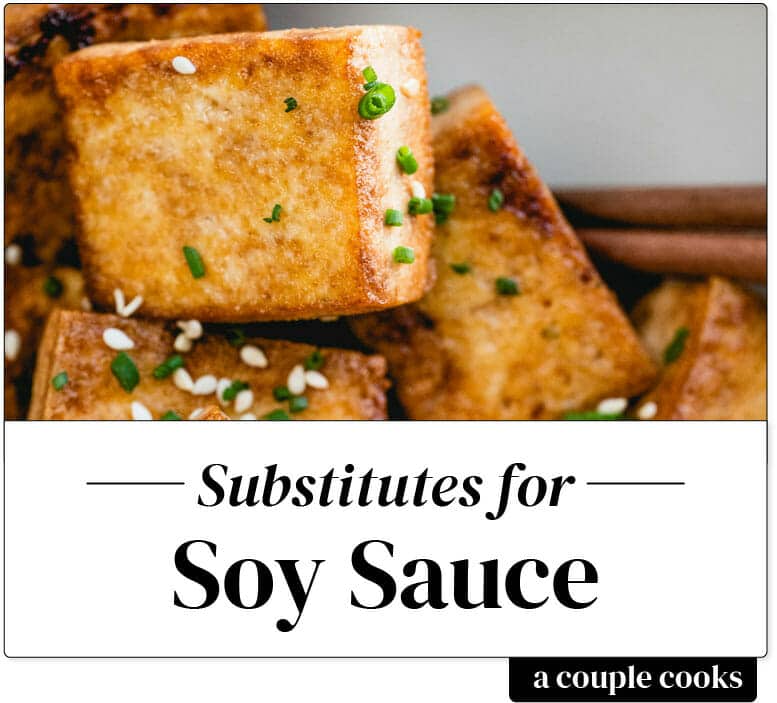Don’t have soy sauce or trying to work around an allergy? Here’s the best soy sauce substitute to use in recipes of all kinds.

Making a recipe that calls for soy sauce and don’t have it? Or, working around a soy or gluten allergy? Don’t worry, there are few options that are perfectly suited as a substitution. Soy sauce is a common ingredient in Asian cooking: it’s salty and contains loads of umami (savory flavor). Soy sauce is Chinese in origin and made from a fermented paste of soybeans and grains. Whether you’re working around an allergy or just can’t find it, here substitute ideas for this tasty ingredient.
Best soy sauce substitute
1. Tamari (gluten free)
The best soy sauce substitute? Tamari. Tamari is also made from soy: it’s specifically a Japanese type of soy sauce. The biggest difference between soy sauce vs tamari is that tamari contains little to no wheat. Many brands of tamari are a gluten-free substitute for soy sauce, which contains wheat. Check the label to make sure! In terms of flavor, tamari can taste slightly less salty than soy sauce, but it depends on the brand. It’s possible you may need to use a little more to taste. Read more at Tamari vs Soy Sauce.
2. Coconut aminos (gluten free and soy free)
Working around a soy allergy? No problem. The best soy sauce substitute for an allergy is coconut aminos. Coconut aminos contains no soy and has a very similar flavor to soy sauce. Substitute coconut aminos for soy sauce in a 1:1 ratio. However, coconut aminos a slightly less salty so you may need to add a little more to taste. Read more at Coconut Aminos vs Soy Sauce.
3. Liquid aminos (gluten free)
Unlike coconut aminos, liquid aminos contains soy. It’s not a good soy sauce substitute for allergies. If you aren’t working around a soy allergy, it’s a great substitute! It has a similar flavor and level of saltiness to soy sauce.
Related recipes
Here are some recipes where you could use this soy sauce substitution:



I always wondered about the soy sauce vs tamari differences. Thanks for explaining them!